Rare Rides Icons: The History of Imperial, More Than Just a Car (Part XX)

Here we are, the 20th installment of the Imperial series. We’ve covered the Imperial’s inception as a coach-built car for the wealthy, through its Fifties rebirth as an independent brand with hand-built quality that rivaled the best luxury car makers had to offer. From there Imperial’s tale was ups and downs (mostly downs) as Chrysler’s luxury arm continually found itself less independent, and more tied to the New Yorker.
But after its sad Seventies cancellation, it was time for an Eighties rebirth under the direction of CEO Lee Iacocca. He was determined to make the best, most exclusive American personal luxury coupe money could buy. To date we’ve learned about the angular bustle back exterior, the J-body Cordoba platform underneath, and the Cordoba-plus leather-lined interior, by Mark Cross. Today we continue with Iacocca’s close personal friend, Frank Sinatra (or ‘FS’ if you’re talking badges.)
Iacocca and the folks behind Imperial felt their new coupe would be an easy success, given all its style, engineering, and technological prowess. People desired the Imperial, and so a lofty sales goal was set: 25,000 examples per year. Worth noting, no Imperial in company history had ever reached that sales figure. To aid in the luxury market’s recognition of such a stellar new car, Iacocca turned to one of the most recognizable Americans of the day, Frank Sinatra (1915-1998).
A friend to Iacocca, Sinatra agreed to put his name on a very special edition of the new Imperial for its 1981 debut. It was called the Frank Sinatra Edition and was branded simply as “FS” on the exterior of the very select few cars blessed with the package. It was one of the only times a production car wore a special edition named after a celebrity.
Aside from loaning his name and color scheme to the Imperial, he also wrote a song for the new Imperial used in ads, “It’s Time for Imperial.” It’s reputed that Frank took payment for his efforts in the form of a $1 bill and an early production example of a new Imperial. It’s also reputed that this example suffered the same reliability issues as the rest of the Imperials of the generation, and damaged the relationship between Sinatra and Iacocca.
Placed far above the Mark Cross designer edition, the FS was made to Sinatra’s exacting specifications, and in his image. There was only one color scheme available, a Glacier Blue Crystal exterior paired to a specially-colored Mark Cross blue velvet or Mark Cross leather interior. The Kimberley velvet upholstery was different from the “Yorkshire” cloth used by the base model Imperials. Leather and velvet were light blue, similar in tone to the powdery exterior. The paint and interior colors were exclusive to the FS, and the former was claimed to match old Frank’s eyes.
Aside from the color, the only way to tell an FS Edition was via the small gold badging on the fenders and rear. A square logo, the FS was about the size of a quarter; remember badging was a no-no generally on this Imperial. All FS Imperials used the sportier snowflake alloys and were not optioned with the wire wheel covers. Inside, special features were a bit more bold.
Across the glovebox was a plaque that displayed the full Frank Sinatra Signature Edition title, reminding an owner of his or her own personal relationship with Sinatra. Since they were certainly a Sinatra fan, included as standard in the FS was a Mark Cross cassette case. Made of leather, it contained a full 16-piece collection of Frank Sinatra’s music, all in terrible cassette clarity.
And cassette goodness didn’t end there! In the carpeted center console box molded over the transmission tunnel, there was another cassette holder. Within it, an owner could place eight of the 16 Sinatra cassettes for easy access. A very tempting package indeed!
The FS was marketed as a limited, one-time offer, and was supposedly only available only for the debut model year in 1981. More in that in a moment. In any event, all FS Editions asked $1,078 ($3,515 adj.) over the base $18,311 ($59,714 adj.) price in 1981.
To put both those asks in perspective, in 1981 a Cadillac Eldorado asked $17,550 ($57,232 adj.), while a Lincoln Continental Mark VI was $17,939 ($58,500 adj.). You see the Imperial was newer, more exclusive, more technologically advanced, and more desirable than its competition. Thus it was justified in asking a higher price! See how that works?
But it didn’t really work. Tom Pappert, Chrysler’s sales VP, made some strong statements about who the Windsor, Canada built Imperial was for and why they bought it.
He said, “It is designed to appeal to the personal luxury car buyer seeking the highest level of prestige, advanced styling, engineering and special features, extended warranty, and VIP recognition in both the showroom and service areas.” Unfortunately, that luxury warranty would turn out to be necessary.
For the part of the automotive journalists, they weren’t so positive about the new Imperial. It was a time of recession, of downsizing, of recent financial trouble at Chrysler. The Imperial was big, heavy, slow, and didn’t handle with finesse because of its aged roots and sloppy suspension setup.
Particularly in the PLC corner of the market, sales were way down. In 1981 Cadillac saw its sales fall by 40 percent, and Lincoln sold half as many Marks as it was accustomed to. With super high pricing and lukewarm media reception, customers generally stayed away from the Imperial, and just 8,113 were sold its first year. That figure included the FS specials.
But Iacocca was still on his Imperial high horse and set about in his free time commissioning something very special: An Imperial limousine. He called up ASC and asked if they might be able to build him an Imperial limo, based upon a 1982 coupe. The company obliged, accepted his check, and then started to chop up an example of the recently deceased R-body Dodge St. Regis. They took the large failed sedan and added 36 inches to the middle, then they applied the front and rear of the Imperial to the respective ends, and used the doors of the St. Regis. It was painted a midnight blue color.
There seems to be just a singular official Imperial limousine photo, the one above. Reports online indicate that aside from the Iacocca special, other people built 24-inch and 36-inch stretch versions. At least three were made. Burt Reynolds in particular liked the Imperial limo, and they appeared in three of his films. For his part, Iacocca gifted the Imperial limo to Frank Sinatra. Maybe it was an apology for the other Imperial that was always in the service bay.
Imperial was virtually unchanged in 1982, save for an edit to the cloth interior’s seat cushions: They were altered from their prior “floating” design to a simpler one-piece look. There was no longer an optional power moonroof this year. Still, even though sales were moving at a glacial pace and the PLC market was down in the recession, Chrysler felt they deserved even more money for the Imperial in 1982. And it wasn’t a small price jump; 1982 Imperials demanded $20,988 ($63,145 adj.), which was $2,677 ($8,054 adj.) more than before.
The cost increase was likely due to the inflationary environment at the time, but nosebleed pricing didn’t draw customers into the showroom. Sales dropped to 2,717 cars, which included 279 more Frank Sinatra Editions that were not supposed to be produced after 1981. The one-time special edition offer was extended, now two times. Chrysler took note of the sales plummet and realized it needed a rethink.
In 1983 the base price was dropped to $18,688 ($54,213 adj.), more in line with the times and the PLC competition. Of course, if Chrysler was going to let the Imperial go at a bargain price, something had to give: The Cartier hood ornament was no more and was made of simple plastic in ’83. Newly available was a Touring Edition package that was intended to upgrade the suspension to a sportier setup. Finally, there was no Frank Sinatra edition as the extended single-year special faded away.
But the Imperial still had divisive love-or-hate styling and was one of those cars whose diehard fans bought one the first year it was available. Sales fell to just 1,555 in 1983. Chrysler quietly canceled the Imperial at the end of the year and retired its independent branding strategy for good.
The decision to ax Imperial was probably more down to its J-body platform mates the Cordoba and Mirada, which also died that year after slowed sales. Chrysler got out of the personal luxury game, and would never reenter it. The closest thing to personal luxury it had from there on out were the various K-based LeBaron coupes.
And so it was that Imperial slumbered once more. But the name was not forgotten, and Iacocca would shepherd Imperial to its most gingerbready greatness ever at the dawn of the Nineties. We’ll get into super-extra K-plus luxury next time.
[Images: Chrysler]

Interested in lots of cars and their various historical contexts. Started writing articles for TTAC in late 2016, when my first posts were QOTDs. From there I started a few new series like Rare Rides, Buy/Drive/Burn, Abandoned History, and most recently Rare Rides Icons. Operating from a home base in Cincinnati, Ohio, a relative auto journalist dead zone. Many of my articles are prompted by something I'll see on social media that sparks my interest and causes me to research. Finding articles and information from the early days of the internet and beyond that covers the little details lost to time: trim packages, color and wheel choices, interior fabrics. Beyond those, I'm fascinated by automotive industry experiments, both failures and successes. Lately I've taken an interest in AI, and generating "what if" type images for car models long dead. Reincarnating a modern Toyota Paseo, Lincoln Mark IX, or Isuzu Trooper through a text prompt is fun. Fun to post them on Twitter too, and watch people overreact. To that end, the social media I use most is Twitter, @CoreyLewis86. I also contribute pieces for Forbes Wheels and Forbes Home.
More by Corey Lewis
Latest Car Reviews
Read moreLatest Product Reviews
Read moreRecent Comments
- Probert They already have hybrids, but these won't ever be them as they are built on the modular E-GMP skateboard.
- Justin You guys still looking for that sportbak? I just saw one on the Facebook marketplace in Arizona
- 28-Cars-Later I cannot remember what happens now, but there are whiteblocks in this period which develop a "tick" like sound which indicates they are toast (maybe head gasket?). Ten or so years ago I looked at an '03 or '04 S60 (I forget why) and I brought my Volvo indy along to tell me if it was worth my time - it ticked and that's when I learned this. This XC90 is probably worth about $300 as it sits, not kidding, and it will cost you conservatively $2500 for an engine swap (all the ones I see on car-part.com have north of 130K miles starting at $1,100 and that's not including freight to a shop, shop labor, other internals to do such as timing belt while engine out etc).
- 28-Cars-Later Ford reported it lost $132,000 for each of its 10,000 electric vehicles sold in the first quarter of 2024, according to CNN. The sales were down 20 percent from the first quarter of 2023 and would “drag down earnings for the company overall.”The losses include “hundreds of millions being spent on research and development of the next generation of EVs for Ford. Those investments are years away from paying off.” [if they ever are recouped] Ford is the only major carmaker breaking out EV numbers by themselves. But other marques likely suffer similar losses. https://www.zerohedge.com/political/fords-120000-loss-vehicle-shows-california-ev-goals-are-impossible Given these facts, how did Tesla ever produce anything in volume let alone profit?
- AZFelix Let's forego all of this dilly-dallying with autonomous cars and cut right to the chase and the only real solution.



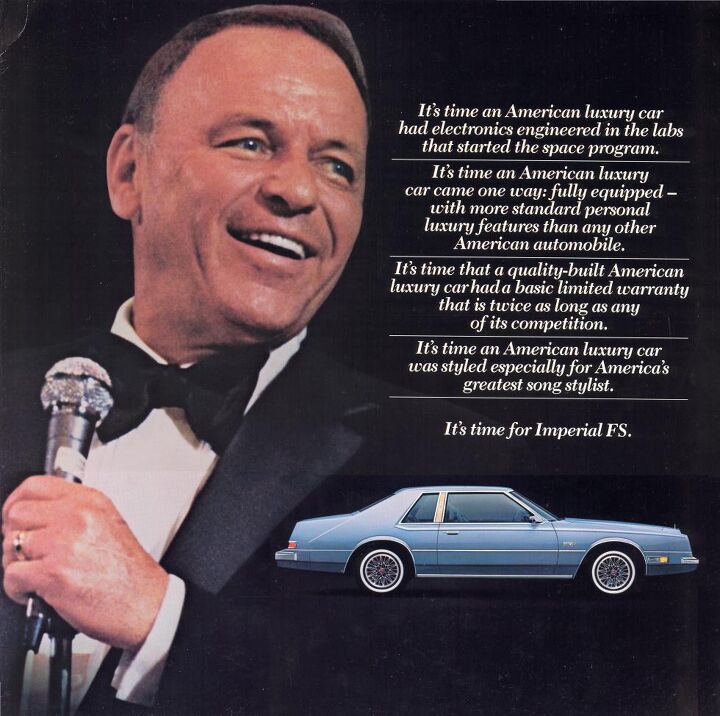




























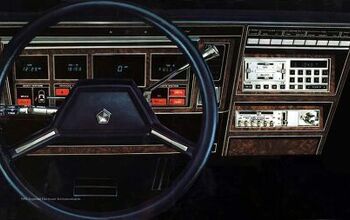
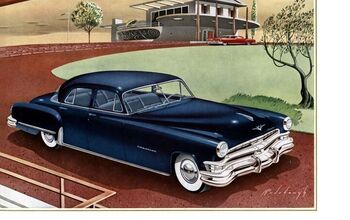
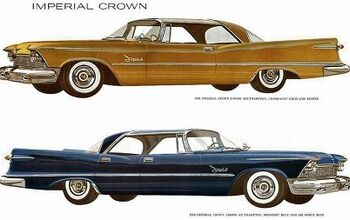
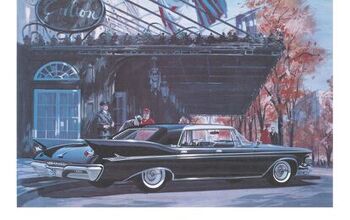










Comments
Join the conversation
I have never cared for this car too much, but I must say that the brochure designers and photographers did a great job with it (pictures 6-13 in this article). The spread of the Imperial posed in the upper left over the small photos of craftsmanship is a real beauty. Look at those whitewalls gleaming in the sunset (or is it sunrise). Nice!
Is it just me or from the picture does the limo not look like the backend of a Daimler DS420 grafted to a front end from an Aston Martin Lagonda?